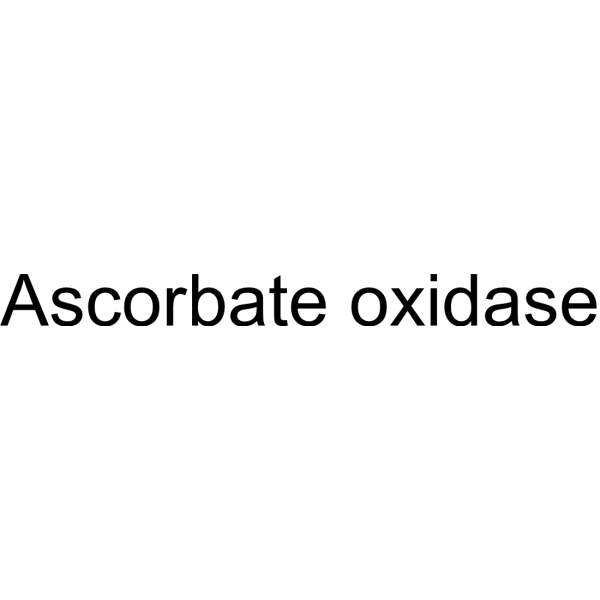Ascorbate oxidase

Ascorbate oxidase structure
|
Common Name | Ascorbate oxidase | ||
|---|---|---|---|---|
| CAS Number | 9029-44-1 | Molecular Weight | N/A | |
| Density | N/A | Boiling Point | N/A | |
| Molecular Formula | N/A | Melting Point | N/A | |
| MSDS | USA | Flash Point | N/A | |
|
Cooling water before panicle initiation increases chilling-induced male sterility and disables chilling-induced expression of genes encoding OsFKBP65 and heat shock proteins in rice spikelets.
Plant Cell Environ. 38 , 1255-74, (2015) In rice (Oryza sativa L.), chilling-induced male sterility increased when plants experienced low water temperature (Tw , 18 °C for 14 d) before panicle initiation. The number of mature pollen grains after chilling at the booting stage (12 °C for 5 d) was only... |
|
|
In Vitro Toxic Effects of Zinc Oxide Nanoparticles on Rat Adipose Tissue-Derived Mesenchymal Stem Cells.
Cell J. 17 , 412-21, (2015) Zinc oxide nanoparticles (ZnO-NPs) are increasingly used in sunscreens, bio- sensors, food additives, pigments, manufacture of rubber products, and electronic materi- als. There are several studies about the effects of NPs on dermal fibroblast or keratino- cy... |
|
|
A critical comparison of two high-throughput ascorbate analyses methods for plant samples.
Plant Physiol. Biochem. 70 , 418-23, (2013) Ascorbate (AsA) is an important metabolite involved in stress response and development of plants. Therefore it is necessary to quantify the AsA content in many fields of plant science, including high throughput and critical applications. In this study we comp... |
|
|
Salicylic acid reduces napropamide toxicity by preventing its accumulation in rapeseed (Brassica napus L.).
Arch. Environ. Contam. Toxicol. 59(1) , 100-8, (2010) Napropamide is a widely used herbicide for controlling weeds in crop production. However, extensive use of the herbicide has led to its accumulation in ecosystems, thus causing toxicity to crops and reducing crop production and quality. Salicylic acid (SA) pl... |
|
|
An integrative genomics approach for deciphering the complex interactions between ascorbate metabolism and fruit growth and composition in tomato.
C R Biol. 332(11) , 1007-21, (2009) Very few reports have studied the interactions between ascorbate and fruit metabolism. In order to get insights into the complex relationships between ascorbate biosynthesis/recycling and other metabolic pathways in the fruit, we undertook a fruit systems bio... |
|
|
Involvement of extracellular ascorbate and iron in hydroxyl radical generation in rat striatum in carbon monoxide poisoning.
Toxicology 264(1-2) , 69-73, (2009) Carbon monoxide (CO) poisoning stimulated generation in rat striatum of toxic hydroxyl radicals (*OH), which might participate in the CO-induced neuronal injury. Since an increase in extracellular ascorbate (AA) stimulated *OH generation in the presence of en... |
|
|
Comparison of ascorbate metabolism in fruits of two citrus species with obvious difference in ascorbate content in pulp.
J. Plant Physiol. 168(18) , 2196-205, (2011) Citrus fruit is widely consumed and provides ascorbate for human health. The ascorbate content in pulp is generally higher in orange (Citrus sinensis Osb.) than in Satsuma mandarin (Citrus unshiu Marc.). However, what contributes to such difference is still u... |
|
|
Extraction of ascorbate oxidase from Cucurbita maxima by continuous process in perforated rotating disc contactor using aqueous two-phase systems.
Appl. Biochem. Biotechnol. 160(4) , 1057-64, (2010) The ascorbate oxidase is the enzyme used to determine the content of ascorbic acid in the pharmaceutical and food industries and clinics analyses. The techniques currently used for the purification of this enzyme raise its production cost. Thus, the developme... |
|
|
Resolving ligand hyperfine couplings of type 1 and 2 Cu(II) in ascorbate oxidase by high field pulse EPR correlation spectroscopy.
Phys. Chem. Chem. Phys. 12(1) , 62-5, (2010) Ascorbate oxidase contains two paramagnetic Cu(ii) binding sites, type 1 (T1) and type 2 (T2) and in both sites the Cu(ii) is coordinated to histidine residues. We use several pulse EPR techniques at high field (95 GHz) to determine ligand (1)H and (14)N hype... |
|
|
Thiourea orchestrates regulation of redox state and antioxidant responses to reduce the NaCl-induced oxidative damage in Indian mustard (Brassica juncea (L.) Czern.).
Plant Physiol. Biochem. 49(6) , 676-86, (2011) Thiourea (TU) has been found to enhance the stress tolerance of plants in our earlier field trials. In the present study, the TU mediated effect on the redox and antioxidant responses were studied in response to salinity (NaCl) stress in Indian mustard (Brass... |